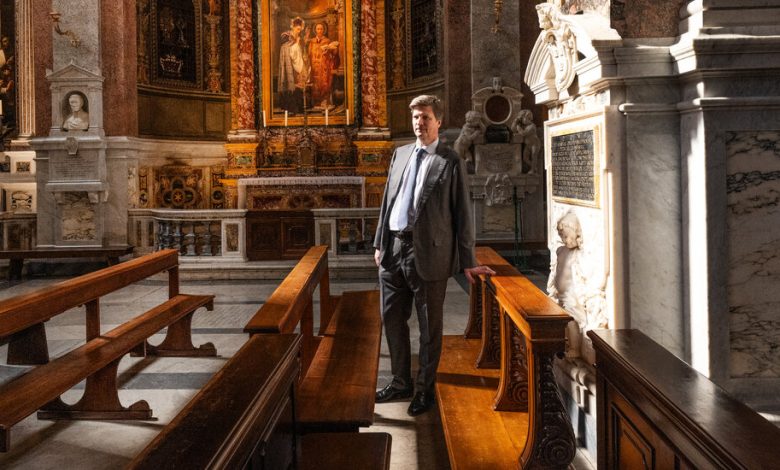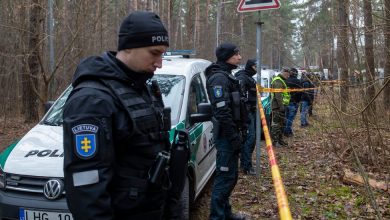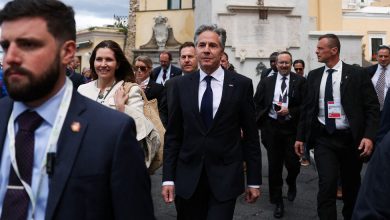Hungary’s Habsburg Ambassador to the Pope, With an Offbeat Résumé

When Pope Francis lands in Budapest on Friday, Eduard Habsburg, Hungary’s ambassador to the Holy See and a descendant of the defunct Habsburg dynasty that once ruled much of Europe, will greet him on the tarmac with a gift.
The ambassador intends to hand the visiting pontiff a Spanish-Hungarian dictionary, continuing a running joke between the two men about how Hungarian is the language of heaven — because it takes an eternity to learn. “Begin now or do you want to wait for eternity?” Mr. Habsburg, 56, said he planned to ask Francis. “He will love this.”
Mr. Habsburg, a deeply devout and conservative Roman Catholic aristocrat, came into the job himself with what he called “very rocky” Hungarian language skills, a result of his upbringing in Munich, Venice and Austria. But after a career as a zombie-movie screenwriter, cartoon producer, love-triangle novelist, anime enthusiast, sci-fi geek and media personality with monarchic sensibilities, the Hungarian government came calling.
“Why? OK. That’s the same question I asked,” the amiable diplomat said over coffee in his residence last week in Rome. “You’re a Habsburg,” he said they told him. “You will find respect in the Vatican if you go to Rome, because the Vatican still respects traditional families.”
Also, he added: “I’m simply a nice guy. I can get along with anybody.”
Mr. Habsburg is hoping that his congeniality will help Francis get along with Hungary’s hard-right, anti-migrant, pro-Russian leader, Prime Minister Viktor Orban, who he said was “thrilled to bits” over the pope’s apostolic visit to Hungarian Catholics, even though it also promises to spotlight the tensions between the two leaders.
Mr. Habsburg has had a front-row seat to the unease of that relationship since he arrived at Vatican at the height of the migration crisis in 2015, when Francis was excoriating the building of walls as unchristian and Mr. Orban was building a fence. Mr. Habsburg has sought to portray the Vatican and Hungary as being on a similar, if not same, page by emphasizing issues ranging from the persecution of Christians to the defense of the traditional family to the desire for peace in Ukraine.
Central to his job has been building relationships at the Vatican and a rapport with Francis, who he describes as an “enigma.”
He said it was well known in the Vatican that Francis, who often concluded remarks with an invitation to “pray for me,” surreptitiously adds about conservatives, “I wonder whether he prays for me or against me.”
When Mr. Orban visited Francis in the Vatican last April, Mr. Habsburg, who is proudly in the conservative Catholic category, told the pope that he himself indeed prayed for him, and not against him.
“Oh,” he recalled Francis saying with laughter. “Someone learned their lesson.”
Mr. Habsburg, tall with a full head of side-parted hair, seemed delighted that the pope’s trip coincided with the release of his latest book, “The Habsburg Way,” which features an introduction by Mr. Orban about how after Hungarians rose “against the Habsburg yoke,” he and his traditionalist ambassador were “on the same side again, and we are going into battle together again.”
Mr. Habsburg, who does not plan on the monarchy coming back — though “crazier things have happened” — ponders in the book “whether our lives, politics — indeed, our world — wouldn’t be better if we tried to do at least a few things ‘the Habsburg Way.’” Those ways are essentially practicing Catholicism with “baroque piety,” having lots of children in wedlock, seeing the upsides of empires, which “have gotten something of a bad rap,” dying well and having “a memorable funeral.”
The Habsburg self-help tips in the book — also promoted on his Twitter feed where he comments on Habsburgs-in-history popularity contests (“Empress Maria Theresia, clearly beating Empress Zita”) — are part of Mr. Habsburg’s way of both cherishing and trading in on his heritage.
In the spectacular Santa Maria dell’Anima, once the church of the Holy Roman Empire, he visited the relics of his distant relative Karl 1, the beatified Habsburg emperor, whom he reveres as the consummate family man and “really quite a star in our family.” He pointed at the gilded and stained glass double eagles that for centuries served as the trademark of the empire and then his family, and that he used to task his five daughters and son with locating.
He brought up his 2020 children’s book, “Dubbie: The Double-Headed Eagle” (“Unfortunately so few people read it. People love to click on things but not to buy”) about an ugly Habsburgian duckling that “hatches and has a double head — one optimist, the other cautious. He has to learn how to live with both.”
Mr. Habsburg’s résumé may be unorthodox for a diplomat, but hanging around with popes is nothing new for the Habsburgs.
His maternal grandfather Karl, Prince Löwenstein-Wertheim-Rosenberg in Germany,was tight with Pius XII, the pope during World War II, and he knew subsequent popes. His paternal grandfather, Archduke Joseph Francis of Austria, fled Hungary in 1944, leading his own father to grow up in exile and speak English at home with his German mother.
Born and raised in Munich, he learned Italian in Venice, where his father worked in textiles. Back in Munich, he developed a love of Latin and Greek; reading Stephen King; and writing short stories, poems and ballads. “I was sort of the intellectual in the family,” he said.
In 1980, his father brought him for the first time behind the Iron Curtain to Hungary, where the secret police “were nervous about Habsburgs coming back.” In 1989, a year after he finished his military service, he boned up on the language with a monthlong crash course in Budapest.
He studied philosophy and history at the Catholic University of Eichstätt-Ingolstadt in Germany, and became enamored with Thomas Aquinas, whose medieval philosophy inspired his thesis. He deepened his studies at the University of Freiburg in Switzerland, where his family had its roots going back to 950, and interviewed champions of the traditional church, including then-Cardinal Joseph Ratzinger, who became Benedict XVI.
“He told me my thesis should be made into a documentary or a thriller, like Dan Brown,” he said. “He was really fun.”
In 1995, he married Baroness Maria Theresia von Gudenus — whose father had been Austrian ambassador to the Holy See and whose mother, a descendant of Archduke Johann of Austria, was Hungarian. “You know all the Catholic aristocrats are somehow related,” he said.
After college, Mr. Habsburg worked for a children’s television company in Germany and edited Pippi Longstocking cartoon scripts. He went on to produce the animated series “Nick and Perry” about “two aliens, but they look like dogs, so they have to pretend to be dogs.” His years in animation gave him a love of Japanese anime, he said, pointing out that his most successful tweet was about “the fifth installment in the ‘Neon Genesis Evangelion’ science fiction series.”
“They can’t imagine that a Habsburg, from a royal family, loves anime,” he said. “‘He’s a geek like us.’”
He moved with his growing family to a country home on the Danube in Austria to pursue his passion for screenwriting. There, he wrote episodes of a TV series about the police on the Danube River; found success with “The Christmas Dog,” a broad romantic comedy, and its sequel, “Two Christmas Dogs.” He optioned a “really good zombie movie set in Austria” and worked on a biopic about the last week in the life of his assassinated ancestor, Empress Sissi, married to Emperor Franz Joseph I.
His novels include “a love triangle story through all of Europe” with “Catholic elements,” he said.
To make ends meet, he found work as a spokesman for a conservative bishop in St. Pölten in Austria, and hosted a TV show about castles.
Soon after Francis became pope in 2013, his father told him to come to Hungary, where the government thought he’d make a good ambassador.
Last week, Mr. Habsburg, whose cousin is now Hungary’s ambassador to France, joined dozens of other diplomats to the Holy See at an event inside the courtyard of the Swiss Guards. He joked that he covered his eyes at a painting in the Swiss Guard’s headquarters of the 14th-century battles of Morgarten and Sempach, which helped bounce his family out of Switzerland.
As the speeches ended and the guards, in their Renaissance-style striped uniforms, began inhaling fondue and swilling Swiss wine, he politely bowed out to go home.
“I have a family,” he said.



